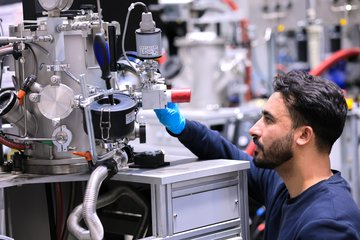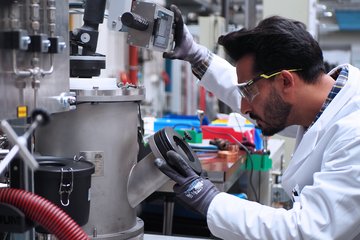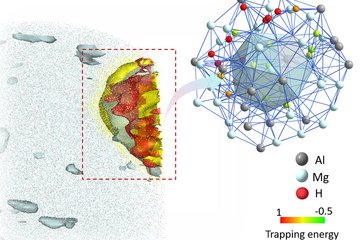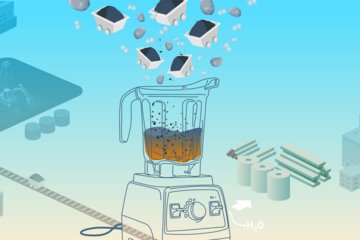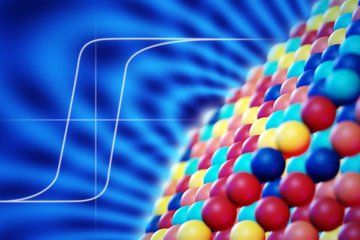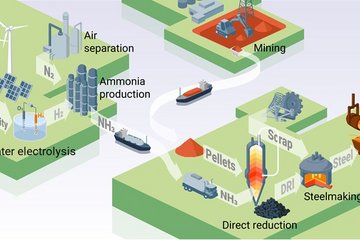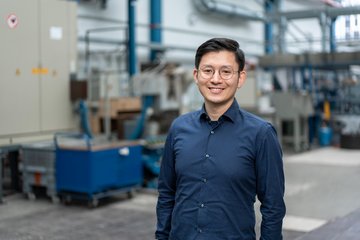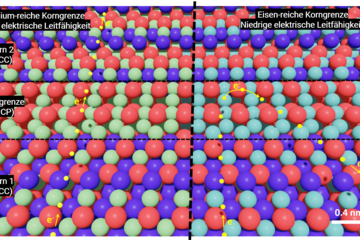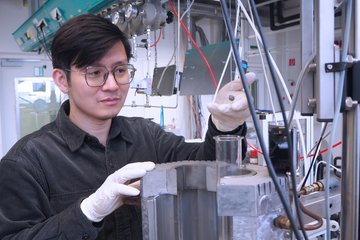Alle Typen
81.
Vortrag
Semiconducting nanoparticle solids for multi exciton solar cells: insights from ab initio calculations. Colloqium at Max-Planck-Institut für Polymerforschung, Mainz, Germany (2015)
82.
Vortrag
Random phase approximation up to the melting point: Impact of anharmonicity and nonlocal many-body effects on the thermodynamics of Au. DPG Spring Meeting 2015, Berlin, Germany (2015)
83.
Vortrag
Understanding 3C-SiC/SiO2 interfaces in SiC-nanofiber based solar cells from ab initio theory. APS March Meeting 2015, San Antonio, TX, USA (2015)
84.
Vortrag
A joint first principles and Kelvin Probe Force Microscopy study of stepped Silicon Surfaces with Unprecedented Resolution. APS March Meeting 2015 , San Antonio, TX, USA (2015)
85.
Vortrag
Nanointerfaces in InAs-Sn2S6 nanocrystal-ligand networks: atomistic and electronic structure from first principles. APS March Meeting 2015, San Antonio, TX, USA (2015)
86.
Vortrag
Nanointerfaces in InAs-Sn2S6 nanocrystal-ligand networks: atomistic and electronic structure from first principles. 79th Annual Meeting of the DPG and DPG Spring Meeting, Berlin, Germany (2015)
87.
Vortrag
Impurity-mediated early condensation of an atomic layer electronic crystal: oxygen-adsorbed In/Si(111)-(4×1)/(8×2). DPG Spring Meeting 2015, Berlin, Germany (2015)
88.
Vortrag
A joint first principles and ATR-IR study of the vibrational properties of interfacial water at Si(100):H-H2O solid-liquid interfaces. APS March Meeting 2015 , San Antonio, TX, USA (2015)
89.
Vortrag
High Pressure Phase Ge Nanoparticles and Si–ZnS Nanocomposites: New Paradigms to Improve the Efficiency of MEG Solar Cells. Materials Science and Engineering (MSE) 2014, Darmstadt, Germany (2014)
90.
Vortrag
In/Si(111)-(4×1)/(8×2): a fascinating model system for one-dimensional conductors. DPG March Meeting 2014, Berlin, Germany (2014)
91.
Vortrag
High Pressure Phase Ge Nanoparticles and Si–ZnS Nanocomposites: New Paradigms to Improve the Efficiency of MEG Solar Cells. APS March Meeting 2014, Denver, CO, USA (2014)
92.
Vortrag
In/Si(111)-(4x1)/(8x2): A fascinating model system for one-dimensional conductors. DPG Spring Meeting, Dresden, Germany (2014)
93.
Vortrag
Solar nanocomposites with complementary charge extraction pathways for electrons and holes: Si embedded in ZnS. DPG Spring Meeting, Dresden, Germany (2014)
94.
Vortrag
Multiple exciton generation in Si and Ge nanoparticles with high pressure core structures. DPG Spring Meeting, Dresden, Germany (2014)
95.
Vortrag
Atomistic and ab initio calculations for energy. JSAP-MRS Joint Symposia 2013, Kyoto, Japan (2013)
96.
Vortrag
Semiconducting Nano-Composites for Solar Energy Conversion: Insights from ab initio calculations. CECAM Workshop CPMD-2013, Leipzig, Germany (2013)
97.
Vortrag
Semiconducting Nano-Composites for Solar Energy Conversion: Insights from ab initio calculations. I-CAMP 12, Boulder, CO, USA (2012)
98.
Vortrag
Large-scale numerical calculations for understanding the properties of materials. 9th Teraflop Workshop, Sendai, Japan (2008)
99.
Poster
Understanding 3C-SiC/SiO2 interfaces in SiC-nanofiber based solar cells from ab initio theory. PSI-K 2015 Conference , San Sebastian, Spain (2015)
100.
Poster
Nanointerfaces in semiconducting nanocomposites: atomistic and electronic structure from first principles. PSI-K 2015 Conference , San Sebastian, Spain (2015)
